Namibia General Information
How to Get to Namibia
We generally use British Airways or Virgin Atlantic into Johannesburg with connecting flights with South African Airlink to Windhoek. Alternatively we can book Lufthansa via Frankfurt on Eurowings into Windhoek from regional airports.
Time Zone
GMT +2 hours
Visas
British citizens do not require visas, but passports must be valid for six months from the date of travel and have two blank pages.
Health
There are no health requirements for Namibia. Northern Namibia is malarial and precautions should be taken. Always consult your doctor at least six weeks before travel and refer to this useful NHS Website for details of recommended vaccinations for your destination.
Language
English is the official language in Nambia. German and Afrikaans are widely spoken.
Local time
Standard Time runs from the first Sunday in April to the first Sunday in September and is GMT+1. Summer Time is from the first Sunday in September to the first Sunday in April and is GMT+2.
Electricity
Electrical plugs are 220 V and are the old round 3pin 15amp type. Adaptors are required and can be purchased at Heathrow or in Windhoek. Not all lodges and camps have power 24 hours a day, so take spare batteries. For those on a mobile safari, some campsites have facilities to re-charge batteries, or there may be an option to charge items from the safari vehicle’s cigarette lighter socket.
Mobile Phone Coverage & Wi-Fi
You will have reasonably good phone coverage in Namibia within populated areas. However you should not rely on your cell phone in national parks and on safari.
Baggage Allowance
For your free baggage allowance on international flights to Namibia please consult your own travel itinerary.
If you are travelling on internal flights, you must use a soft, carry-all style bag, not a hard suitcase. Some baggage allowances may be less than 20kgs and you will need to check your travel itinerary.
A guest travelling alone who weighs 200lbs or more, or two guests travelling together whose combined weight is 390lbs or more, must advise us. All weight limits are due to safety factors, and should these limitations be exceeded, it may be necessary to charge for an additional aircraft.
If you are joining a camping safari your luggage allowance is 15kgs, not including a small carry-on bag to take with you in the vehicle and camera equipment.
Currency
The local currency is the Namibian dollar which is fixed to the South African Rand at a rate of N$1=ZAR1. The South African Rand and Namibian dollar are both accepted in Namibia but the Namibian dollar is not accepted in South Africa.
Visa and MasterCard are widely accepted, but not at petrol stations, which may only accept cash. Visitors may bring any amount of foreign currency into the country. You can use debit cards at ATMs and cash machines in Swakopmund and Windhoek.
Travellers Cheques and foreign currency can be exchanged at any of the commercial banks, but this is a time consuming process and is not advised. Banks are generally open during the following hours:
Monday–Friday: 09h00 to 15h30
Saturday: 09h00 to 11h00
Tax & Customs
General Sales Tax (GST) in Namibia is 15%. Bona fide tourists to Namibia are exempt from paying sales duty or excise duty on luxury items such as jewellery.
Park Fees & Deposits
Park fees are payable for entrance into most national parks in Namibia. When staying at one of the government rest camps in Etosha, the Waterberg or Sossusvlei, entrance fees are additional to the room rates, and a CASH deposit of N$500 is payable per room. This is a fixed charge, regardless of how many nights you are staying. It is a returnable deposit, but if there are any breakages or missing items, the cost of these will be deducted.
Malaria - Malaria is widespread in Africa, although Namibia’s arid climate means it has a low incidence of malaria in the mid-to-southern regions. Etosha, Damaraland, the north and north-east are however considered as malaria areas, and we recommend the use of Malaria prophylactics.
Water – It is very important that you drink plenty of water especially during the warmer months. It is generally recommended that you drink at least 2 to 3 litres of water a day to limit the effects of dehydration. This excludes tea, coffee and alcoholic beverages, which act as diuretics and contribute to dehydration.
Water from hotel taps is purified and visitors need have no hesitation in drinking it. Water from boreholes in camps is also good, but may be brackish.
All visitors must have a passport with at least six months validity for after the time of departure from the country. Visitors must also have proof of onward travel.
The temperature in Namibia varies depending on the region. Generally days are hot and nights can be chilly, making layered clothing is a sensible option. Cool clothing in neutral colours is your best bet for a Namibia safari. Remember to pack comfortable walking shoes and binoculars.
Photography & Binoculars
A camera with a telephoto lens is useful on safari as this will help you to get better photographs of birds and animals. Wide- angle lenses are ideal for capturing the vast panoramic landscapes. Take a spare memory card if you are a keen photographer.
Good quality binoculars can hugely enhance your safari experience and are highly recommended.
Tipping is customary in Namibia. A standard tip in a restaurant would be 10%, and you would usually tip a hotel porter about N$5.
In the major centres, such as Windhoek and Swakopmund, many shops specialise in attractive local products such as diamonds, semi-precious stones, curios of all types, including dolls dressed in the traditional Herero style (these are made by Herero woman), hand-carved wooden objects and beautifully fashioned jewellery.
Best Time To Visit Namibia
When to go
Namibia enjoys year-round sunshine. April to September, the Namibian winter, is the better time to go to Namibia as the temperatures are much more pleasant for travel. It can be very hot from November through March, with temperatures over 35° centigrade, especially in the south. Summer is the rainy season, though there is very little rain and the main rains usually occur in March.
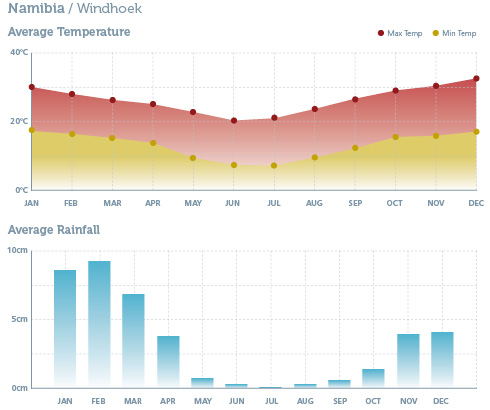
Things To Do in Namibia
- Stargaze under pristine night skies on the Skeleton Coast
- Search for ancient Welwitschia mirabilis plants in the Namib Desert
- Spot desert-adapted elephants and trek rhino on foot in Damaraland
- Beachcomb the shipwrecked sands on the Skeleton Coast
- Climb to the top of Sossusvlei’s famous Dune 45
Self-drive holidays
Hundreds of miles of well-maintained and virtually empty roads through spectacular landscapes make Namibia a great place for a self-drive holiday. You can stay in good value guest farms, or luxury lodges.
Small group tours
Alternatively, we offer a wide range of group tours, including budget camping, luxury camping and accommodated.
Fly-around
For a spectacular birds-eye view of this beautiful landscape, and ideal if you want to maximise what you see in a short period of time, consider travelling between camps by light aircraft. It's a wonderful way to get a sense of topography and scale of the country.
FAQ
Nikki Lynas is a big fan of Namibia, and here she answers frequently asked questions about this Southern African destination.
Tell me why I’d should go on holiday in Namibia?
For me the defining characteristic of Namibia is its enormous landscapes. I've travelled from north to south and I love the changing contrasts, its rocky deserts and thirst-quenching salt pans, its deep rugged canyons and huge sand dunes, and finally its wind swept coastlines, battered by treacherous seas. If you enjoy being on the move and love vast scenic vistas, Namibia is probably the perfect destination for you.
What's the best way to get to Namibia?
The most popular route is to fly via Johannesburg to the capital, Windhoek. There are daily flights from London and this gives you the option of extending your holiday to other Southern African countries using good-value add-on air fares. Lufthansa and Eurowings also fly via Frankfurt to Windhoek, and we can arrange a connecting flight from the UK. Unfortunately there's no longer a direct flight from the UK.
What's the best way to travel around the country?
The most popular way to see the country is by hire car, staying at lodges and hotels along the way. You drive on the left as you do in the UK. Most times of the year a standard 4-door saloon car is fine although you may prefer a Nissan X-Trail style car which has higher road clearance, whilst still being a 2WD. The roads are well-maintained and even on gravel roads you don't need four-wheel drive.
We'll suggest routes and work out the best Namibia tour itinerary with you, there are taking account of your particular interests and time available. Our team on the ground will meet you at Windhoek airport and give you a full briefing along with maps and emergency back-up information.
If time is tight and budgets allow, taking light aircraft flights between the major highlights maximises what you can fit in and gives you a wonderful birds eye view of the vast landscapes.
There are a number of excellent small group tours that travel by road and take in all Namibia's highlights. These range from semi-participatory camping trips to tours where you stay in small hotels and lodges. Group tours can be very sociable and immense fun. If you want something in between, we can arrange a self-drive with a vehicle that has a pop-up tent on the roof.
See our selection of Namibia holidays.
Are there specific things we should consider when self-driving in Namibia?
Yes – I always pass on the following tips:
- Fill up with fuel at regular intervals and travel with cash, as many of petrol stations don't accept card payment.
- Keep well hydrated and take a good selection of music or other form of entertainment for some of the longer journeys.
- In the wet season, a car with higher road clearance similar to a Nissan X-Trail is advisable, but a four-wheel drive is not usually necessary in the main tourist areas.
- Avoid driving at night, not least because animals are attracted by the warmth of the tarmac and often sleep there overnight.
If there was one thing I shouldn’t miss, what would you recommend??
If you have the time to get down to the far south, the Fish River Canyon and the forgotten mining town of Kolmanskop, which has been partly reclaimed by the sand, are fascinating places. I'd personally always want to stop over at Okonjima to support the brilliant work they do with the rehabilitation of African cats. Sand board down a dune, not for every one but do try to climb one, just for the view. That's three things and I'd also add, sample an ice-cold German beer!
Can I drink the tap water?
It’s generally safe to drink tap water in Namibia but bottled water is available everywhere.
Is English widely spoken?
Yes, its widely understood and spoken. Before independence, Namibia was a German colony and then annexed to South Africa, so German and Afrikaans are widely spoken as well as a number of local languages. All road signs and general tourism information is printed in English.?
Should I expect very basic facilities in Namibia lodges??
Namibia has everything from basic camping facilities and small guest houses, to boutique hotels and high-end luxury private lodges.
What is the food like?
Namibia cuisine is heavily influenced by its Germanic and South African history, from bratwurst to braai (BBQ). Most places will serve European style meals as well as local delicacies. The fish by the coast is good and there are usually vegetarian options although these may be a bit unexciting.
Can my holiday in Namibia contribute to the local economy and conservation?
Many of the lodges and hotels we use contribute to community development and conservation projects. They employ people from the local community and ensure their training programmes are rigorous and help people to continually develop their skills. Ask us for details.
Do I need to get any vaccinations ahead of travel and/or malaria tablets?
Malaria is only an issue in the northern parts of Namibia, such as Etosha and the Kunene River area. Do contact your doctor or travel clinic at least six weeks ahead of travelling for up to date information on suggested precautions.
I am pregnant, can I travel to Namibia?
If you avoid the northern malarial areas, this would be possible, but you should always consult your doctor.
Nikki Lynas
Travel Specialist
Looking for inspiration?
You'll find expert travel guides, holiday ideas and insider tips now on the Rainbow blog
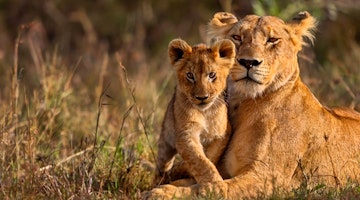
Top 5 First Time Safari Destinations

Salar De Uyuni - The World's Largest Salt Flat

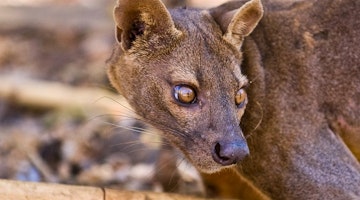
10 Strange Animals and Where to Go to See them

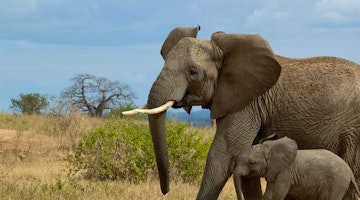
Top five South Africa Safari lodges
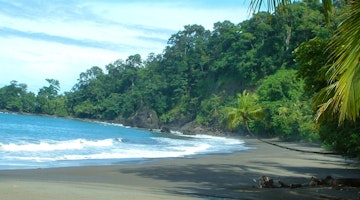
Sustainable Tourism In Corcovado National Park, Costa Rica

Why Choose Us?
Passionate travel experts
- We've been leading wildlife travel since our first South Africa tours over 25 years ago
- Our Travel Specialists have lived in their specialist area for years
- We work with local guides to immerse you deeper in our diverse range of experiences
Personal & tailor-made
- You'll speak to your own expert who'll share their first-hand knowledge
- We'll make your itinerary seamless with 24/7 emergency contact available
- Your Travel Specialist will listen to ensure you have the best chance of seeing the wildlife you love
Responsible by nature
- We take care to actively contribute to the conservation of environments we visit
- For select countries, we make a charitable donation on your behalf when you make your booking
- We've partnered with conservation experts and NGOs to curate responsible tours
For the latest travel advice from the Foreign, Commonwealth and Development Office check www.gov.uk/travelaware



